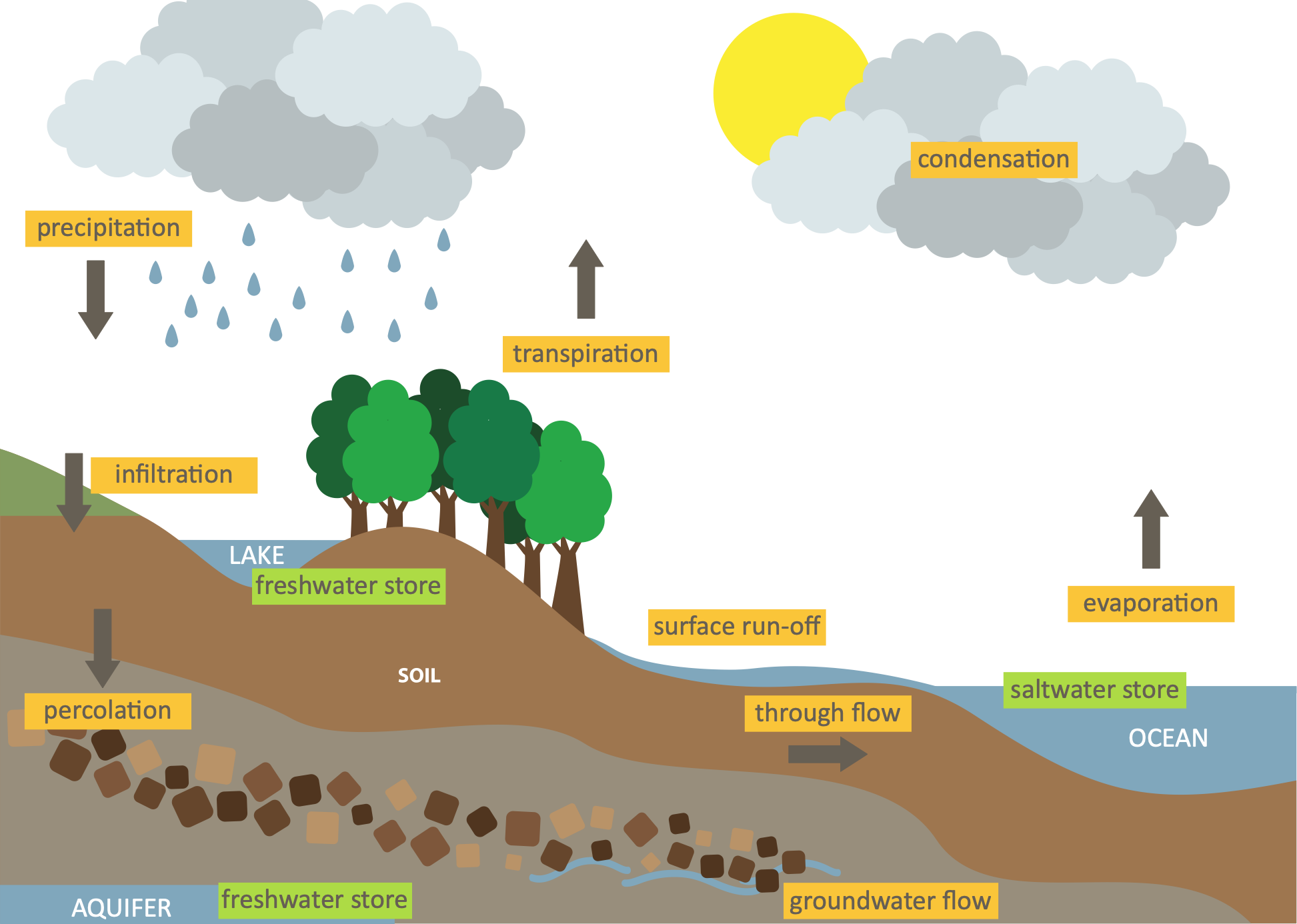The Hydrological Cycle: Characteristics, Stores, and Transfers
The hydrological cycle, also known as the water cycle, refers to the continuous movement and circulation of water on Earth. It involves various processes that ensure the constant exchange of water between the Earth’s surface, the atmosphere, and back to the surface again.
The hydrological cycle is a closed system, as the system has no inputs or outputs. Water is constantly recycled through the system.
Water can be held for different periods in stores, which are bodies that receive, hold and release water. Stores include:
- oceans and seas
- rivers, lakes and reservoirs (on land)
- groundwater (in bedrock)
- in the atmosphere as water vapour and clouds
97% of the world’s water is stored in oceans and seas. Of the remaining 3% fresh water, just over 2% is stored as snow and ice. 0.6% of the world’s freshwater is stored as groundwater, and 0.1% is found in rivers, lakes and reservoirs. Just 0.001% is held in the atmosphere.
Transfers of water occur between the different stores by the following processes:
- Evaporation: The process of water transforming from liquid to vapour state due to the heat energy received from the Sun. It primarily occurs on the surface of oceans, lakes, and rivers.
- Transpiration: Plants absorb water from the soil through their roots, and a significant amount of it is released into the atmosphere through tiny openings in their leaves called stomata.
- Evapotranspiration: The combined transfer of water vapour from the surface of the Earth and plants.
- Condensation: The vapour in the atmosphere cools down and changes back into liquid form, forming clouds. This process occurs when warm, moist air rises and meets cooler air.
- Precipitation: Water droplets in clouds combine and fall to the Earth’s surface in the form of rain, snow, sleet, or hail. Precipitation can occur over land or bodies of water.
- Infiltration: When precipitation reaches the Earth’s surface, it may be absorbed by the soil and percolate downward to replenish groundwater reserves.
- Runoff/Overland flow: Excess water that does not infiltrate the ground flows over the surface, forming streams and rivers and eventually reaching the oceans.
- Percolation: Water moving from the soil into the spaces (pores) in the bedrock rock.
- Throughflow: The movement of water through the soil
- Groundwater flow: Water movement through underlying permeable rock strata below the water table.
These processes create a continuous cycle that sustains the world’s water supply.

